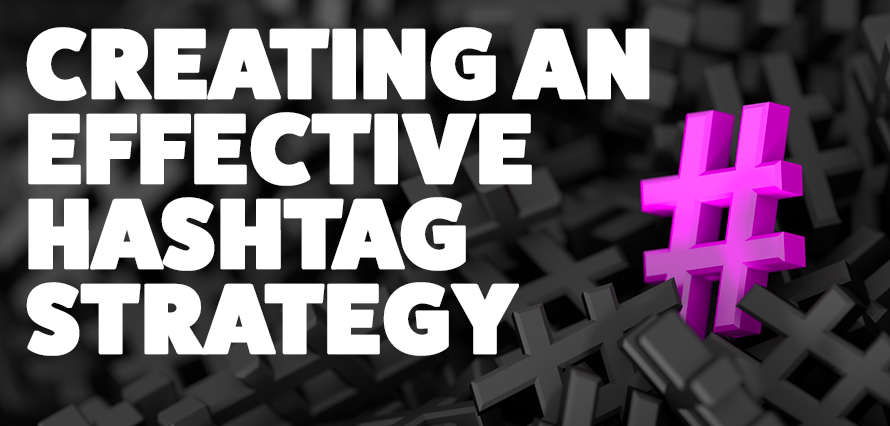November 16, 2021

Hashtags. They’ve been around forever (not quite, but almost) and they’re a bit like marmite, some of us love them, some of us hate them. But at the end of the day, they’re extremely effective to use on social media – if you’re using them in the right way, of course!
Within this blog, we’re going to outline ways of creating an effective hashtag strategy, how to strategically implement them into your content, and the reasoning behind using them.
Kicking off, let’s go back to basics.
What are they and why should you use them?
A hashtag is a tag that can be combined of letters, numbers, and emojis, to help categorise content, making it easy for users to search for content related to a certain topic.
For marketers, hashtags are a way of expanding the reach and engagements of your content and company, joining in on trending conversations, and offering a space for audiences to interact.
How can you find them?
Although not a new aspect of social media, many marketers are yet to understand the real value of a hashtag or how to choose the correct ones for your content. To find the best hashtags to use, we need to undertake some research and do a bit of digging within each relevant field.
Check if it’s active and how widely used it is. Widely used hashtags can be great, but it also comes with downfalls. Using anything too popular may get lost within feeds and not actually be relevant to the topic of your conversation. Whereas using a more niche hashtag, offers you the opportunity to jump into relevant conversations with the audience you’re appealing to. With proper research, brands can identify hashtags relevant to them, to help with community management and broadening reach.
How do they differ?
Like everything to do with your social media marketing, you need to put a strategy in place to help with understanding and guidance. When it comes to hashtags, there are 3 main strategies that brands should focus on; brand/campaign-specific, trends/holidays/awareness days, and content-specific.
Brand and campaign-specific hashtags do what they say on the tin – they’re specific to your business. Whether this is a tagline that you use widely across your brand or one created to help boost marketing campaigns and activities.
Trends, holidays, and awareness days, like content, focus on a key moment in time. Research can be done ahead of time in some cases, but it’s useful to stay up to date and jump on trends. However, be careful not to use irrelevant hashtags and spam trends.
Content-specific. Again, another obvious one, but your hashtags must relate directly to your content. If you’re a coffee brand, you wouldn’t share hashtags relating to yoga, unless it’s very specific.
And finally, how do you structure them?
Every platform offers different advice on how to structure your posts. Whether you add hashtags within your copy or at the end, usually depends on you, the hashtags you’re using, and the actual context of your post. Just please, please, do NOT make it look like spam. Otherwise, those engagements you were hoping for, will not appear.